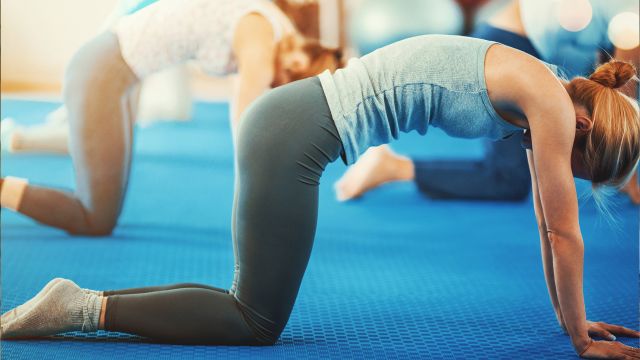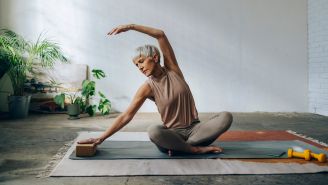Updated on April 8, 2022.
Exercise is good for more than just your heart, lungs and muscles. Physical activity is one of the best ways to keep your bones healthy, whether you’re young or old.
Bones are living organs, says Carmelita Teeter, MD, an orthopedics and sports medicine doctor at Medical City Las Colinas in Irving, Texas. During your early- to mid-20s, your bones accumulate a supply of calcium. However, once you hit your 40s, bone mass starts to decrease. If your body needs calcium and you don’t get enough from your diet, your body will take it from the bones, says Dr. Teeter.
Other factors that can weaken bones further include: immobility (such as if you have a limb in a cast), physical inactivity, and osteoporosis, Teeter says. To fight all three, you need to exercise.
Build strong bones through exercise
Weight-bearing exercises are the most effective way to increase bone strength. They are activities during which you’re working against the force of gravity. Any exercise you do on your feet is weight-bearing because the bones in your legs are supporting your weight. Moving a dumbbell is also weight-bearing because you’re trying to pull the weight up while gravity is pulling it down.
High-impact exercise—like running or jumping—helps build stronger bones, as well. The force of the impact stresses your bones, and your body responds by making them stronger. Some exercises that are neither weight-bearing nor high-impact include swimming and cycling, because you’re not supporting your own weight and there’s no impact on your bones.
Best exercises for your bones
Experts often recommend the following activites to build and maintain bone strength.
Weightlifting. Weight training is great because it trains or works out non-weight-bearing bones of the arms and hands, says Teeter.
You don’t have to be Mr. Olympia to get the benefits of weight training, either. Doing it with small weights and lots of repetitions can increase bone density up to 22 percent in postmenopausal women who are at increased risk of osteoporosis, and up to 29 percent in people osteopenia, according to a small study published in 2017 in the Journal of Sports Medicine and Physical Fitness.
Other studies have shown exercise slows bone loss rather than increases bone density.
Yoga. During yoga you support yourself with your arms or your legs. Increased flexibility and improved balance are two benefits of yoga, and both can help prevent falls and bone breaks, especially in older people.
“Hip fractures in the elderly are common. They lose balance, trip, and fall on their hip, breaking it,” says Teeter. Wrist fractures, caused by people trying to catch themselves when they fall, are also common, she says. Fractures are more than just painful as you get older; they can be deadly. One 2015 Australian study of more than 238,000 people age 45 and older found that fractures doubled the risk of premature death.
Walking and jogging. Walking and jogging will strengthen your leg bones since they’re supporting your body weight. As you jog, the added force of your feet against the ground will further stress your bones and make them stronger. Make sure to cool down and stretch properly after your run, and don’t overdo it to avoid overuse injuries.
“Jogging is sort of the maximum high impact exercise,” Teeter says. “Walking is more moderate. The bouncing you get with running really loads the bones.”
If you don’t want to give up jogging, just be careful on the treadmill, especially if you’re older or have poor balance, Teeter advises.
Dancing. Cutting a rug is a high-impact exercise that’s good for more than just your bones. In the realm of bone health, dancing is “a little more high-impact than walking and a little less than jogging, and that’s a great zone,” Teeter says. Those furious feet smacking against the floor creates forces that will strengthen the bones in your legs.
Beyond bones, a small 2016 study published in Circulation found that older adults who took a twice-weekly dance class for four months showed marked improvement in a physical fitness test after the four months were up.
Tennis. Running around the tennis court and leaping to return a crafty serve are high-impact ways to add strength to the bones in your legs. But many people may not realize swinging the racket is a workout, too. The weight of the racket is a form of resistance that will strengthen your arm bones, and the jolt of the tennis ball against the racket adds further stress.
“Tennis is a resistance-type exercise for the upper extremities as well,” says Teeter. “It’s high impact but not as high as running.”
No matter what exercise you choose to do to bolster your bones, consistency and variety are key. Teeter recommends three or four 30- or 45-minute workouts a week. “If you’re already doing cardio, add in resistance training, whether it’s weightlifting or something like Pilates,” she says.







